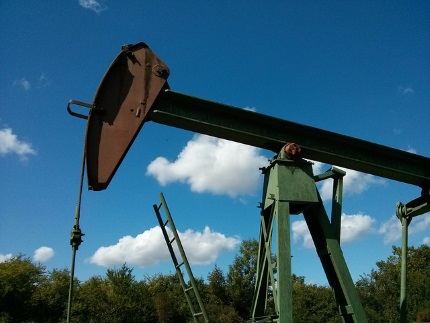The energy sector is one that keeps rewarding its investors. For example, let’s look at the so-called “Big Three” oil services companies: Halliburton (HAL), Baker Hughes (BKR) and SLB (SLB)—formerly Schlumberger.
In 2022, these firms registered their most profitable 12 months since the heyday of the U.S. shale boom, reporting an aggregate net income of $4.4 billion in 2022, which was the highest combined figure since 2014.
Most of this income came in during the latter part of 2022.
SLB racked up $3.4 billion in profits in 2022, almost a third of which came in the final quarter. Halliburton also brought in the bulk of its $1.6 billion in earnings in the latter part of the year.
Baker Hughes was the worst performer, posting a full-year loss of $601 million, thanks to parts shortages and write-offs connected to its Russian operations. But even it ended the year on an upbeat note, with record quarterly orders of more than $8 billion. Baker Hughes also posted $5.9 billion of revenue in the fourth quarter.
So, what comes next? Can the good times continue to roll?

Looking Ahead at Energy
Most of Wall Street is saying to stay away from anything energy related. Please, don’t listen to them.
Instead, listen to the people at ground level that actually see what is going on in the energy industry.
For instance, during SLB’s earnings call, CEO Olivier Le Peuch was almost giddy, saying: “We concluded the year with 23% growth in revenue; 70% growth in earnings per share, excluding charges and credits; adjusted EBITDA margin expansion of 152 basis points; cash flow from operations of $3.7 billion; and 13% return on capital employed (ROCE), its highest level since 2014.”
In addition, Le Peuch described 2022 as a “pivotal” year for the energy industry, which he said had just entered the “early phase of a structural upcycle,” adding: “The fourth quarter affirmed a distinctive new phase in the upcycle…Durability is here to stay—and we are talking about years.”
Higher energy prices over the past year have pushed up drilling and production activity and triggered a rush to secure the equipment and personnel provided by oil services companies. Equipment shortages, materials like frac sand, and insufficient manpower have allowed the oil services firms to raise prices. Meanwhile, the cost-cutting regimes put in place during the coronavirus pandemic have bolstered their profit margins.
Jim Rollyson, head of oilfield services equity research at Raymond James, told the Financial Times: “Rising profitability paired with constrained capital expenditures is allowing these companies to generate strong free cash flows.”
That’s why the stocks of oilfield services companies outperformed the broader market, as well as other energy stocks in 2022, and will continue to do so. The Financial Times reported oilfield services stocks, as tracked by the OSX (PHLX Oil Service Sector) index, rose 59% in 2022—their best performance since 2009!
And, as the CEO of SLB said, the outlook is bright going forward.
Company executives in the sector paint a universally positive outlook for the year ahead, thanks to rising oil demand, tight supplies, and a renewed focus on energy security.
“With years of under-investment now being amplified by recent geopolitical factors, global spare capacity for oil and gas has deteriorated and will likely require years of investment growth to meet forecasted future demand,” said Lorenzo Simonelli, Baker Hughes’s chief executive. “For this reason, we continue to believe that we are in the early stages of a multiyear upturn in global activity.”
The only unfortunate thing, from an investment standpoint, is that none of these companies have a high dividend yield. The highest-yielding stock out of the “Big Three” is Baker Hughes (2.4% yield), so let’s take a closer look at it.
Baker Hughes
The number-three oil services company as we know it today was formed from the merger of Baker Hughes and GE’s oil and gas business in July 2017.
The company’s industrial energy technology (IET) division drove most of the sequential revenue growth in the fourth quarter because of elevated demand for Baker Hughes’ gas technology equipment. Nearly 60% of the segment’s order intake was derived from gas technology equipment. The IET division overall garnered more than $4 billion in orders this quarter, nearly double the quarterly average since 2017.
There are two major bullish factors that will benefit Baker Hughes in the years ahead. First, the company’s strong market share in several oilfield services specializations (such as directional drilling) should lead to significant contract wins, as well operators seeking to maximize production efficiency. And second, high demand for liquid natural gas refineries over the next decade will ensure a robust project pipeline for Baker Hughes, even if oil demand falls.
Now, let’s look at the Baker Hughes dividend…
On October 27, 2022, the company did increase its quarterly dividend by 6%, to $0.19 per share, or $0.76 annually. The first payment at the new rate was made on November 18, 2022. Argus’ revised dividend forecasts are $0.80 (raised from $0.76) for 2023 and $0.84 for 2024.
The firm does consistently return cash to shareholders: Baker Hughes has paid annual dividends per share of $0.72 since 2018—even during the 2020 downturn when many of its peers cut or altogether suspended distributions to conserve cash.
Baker Hughes also completed $434 million worth of share buybacks in 2021 and is targeting annual buybacks of between $200 million and $300 million over the next few years. Management indicates it will revisit its shareholder returns strategy once GE—which currently owns about 16% of Baker Hughes’ stock—fully exits its investment position, likely by the end of 2023.
BKR stock is a buy anywhere in the low $30s.





